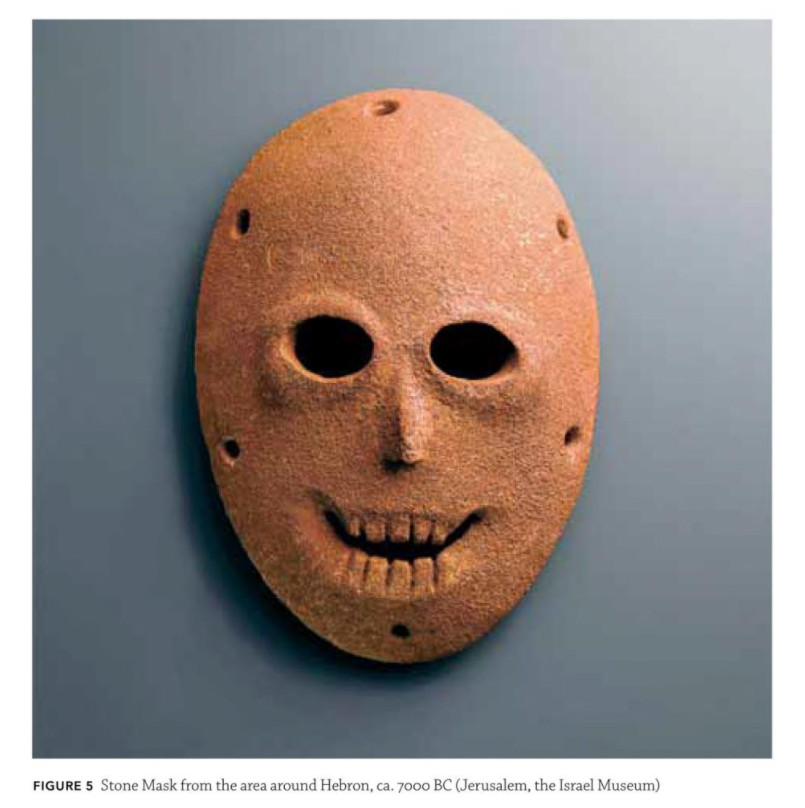‘the mask was understood as a copy of the face … as a substitute for that face’

The history of the human face begins in the Neolithic period with masks that represented or replicated faces. Masks are evidence of the oldest human concept of the face.
![]()
The same Neolithic site complex also contains evidence of a second practice in the cult of the dead. This consists of real skulls covered with a thin layer of fired lime and clay fused together; the empty eye sockets are filled with seashells. In this case the mask does not lie upon the face, but rather it is the face, for it is modeled directly onto the skull, to which it has restored the face that it once wore. In other words, in place of its living face, the skull has received a new, permanent one, which may then be understood as an image. In some cases, the skulls were mounted on small structures such as pedestals. This produced a composite entity consisting of skull(corpse) and image.
Hans Belting, Face and Mask (p.32-36)

Study of Death mask — Project Passersby / 30x24.5cm, Pigment Bar on Linen 2020, Berlin
